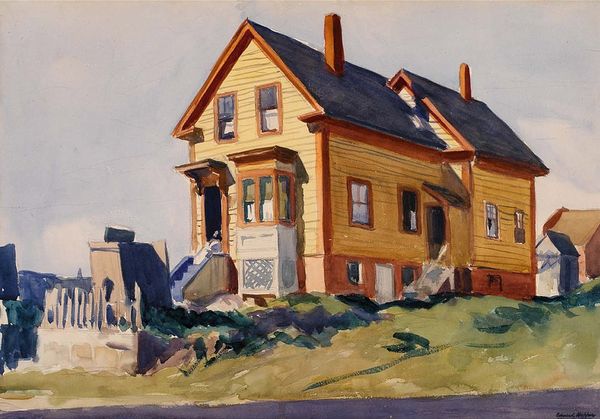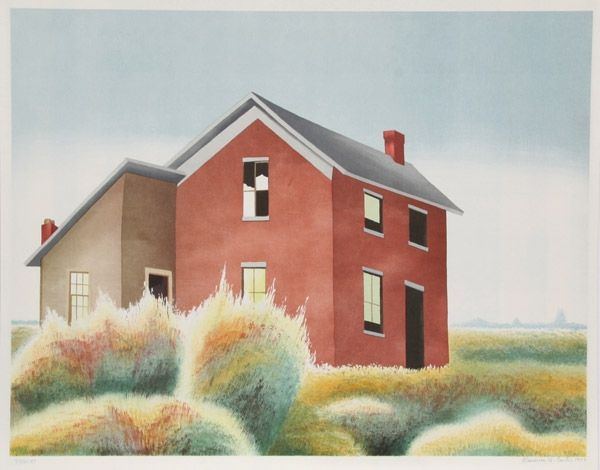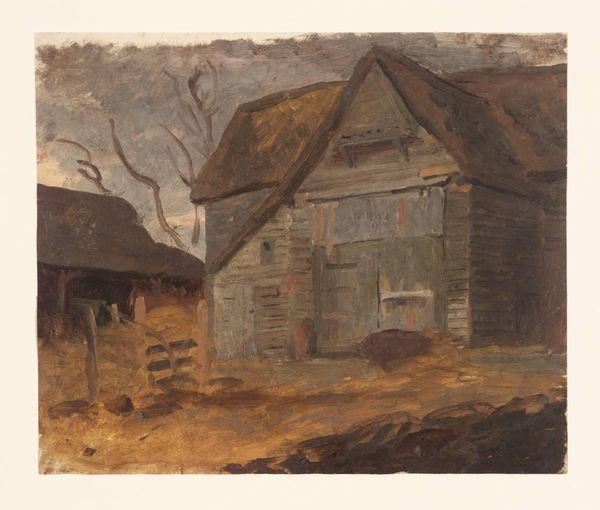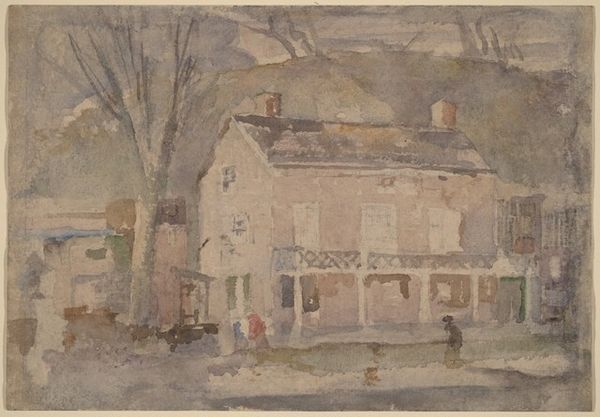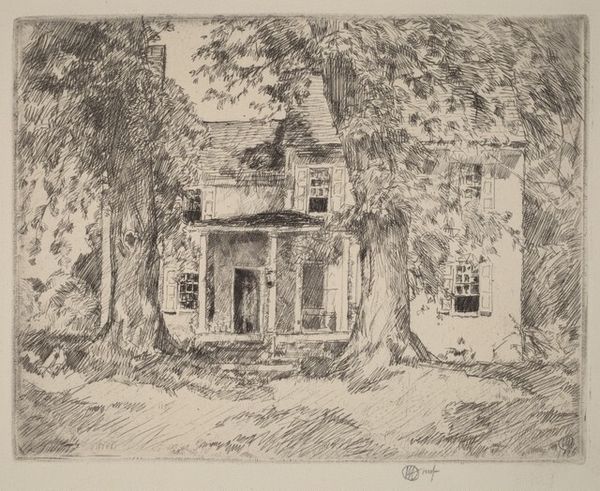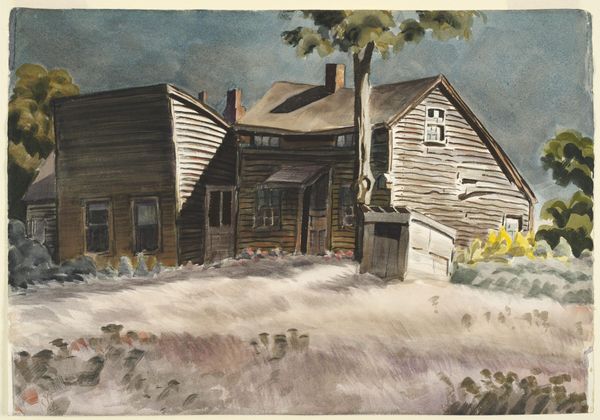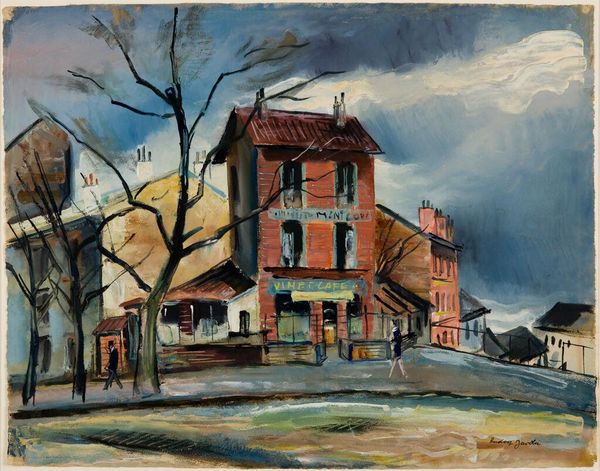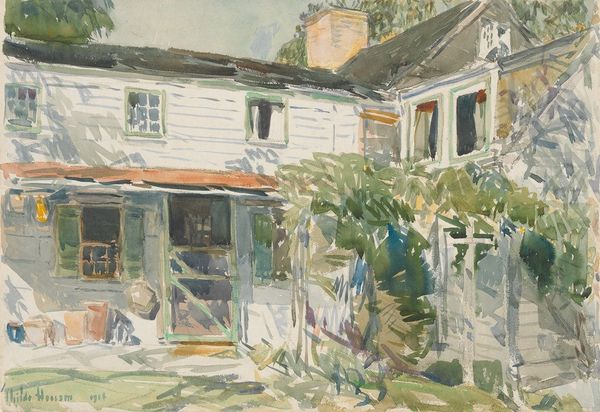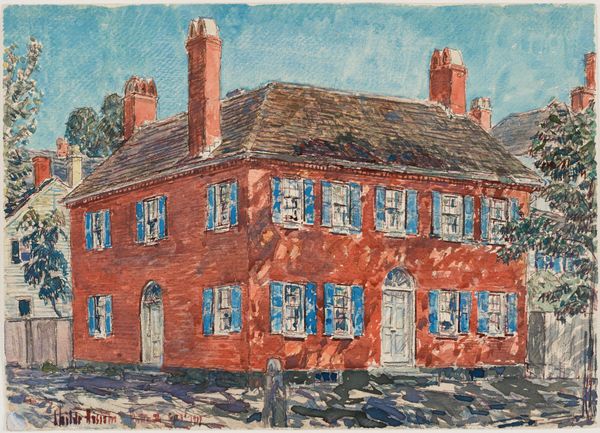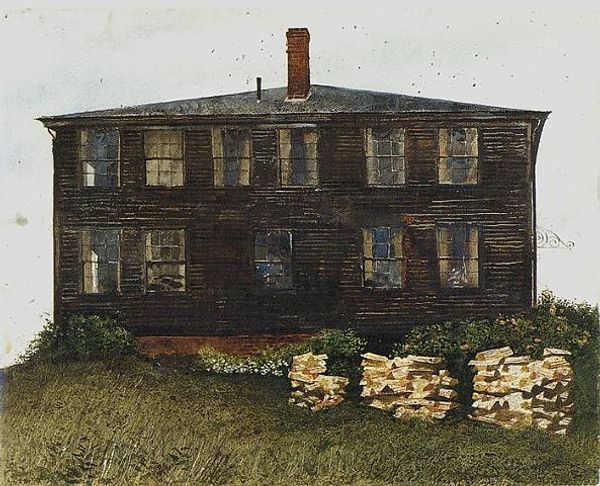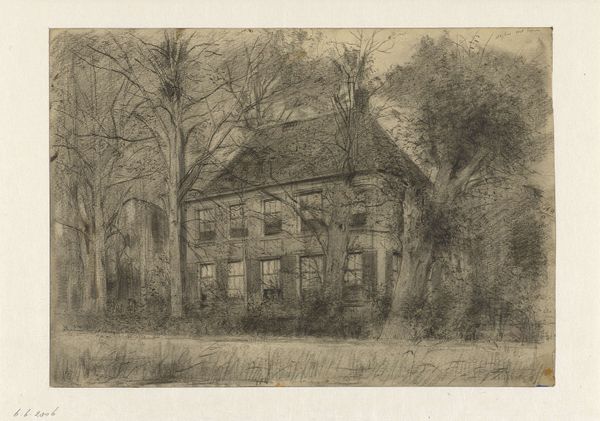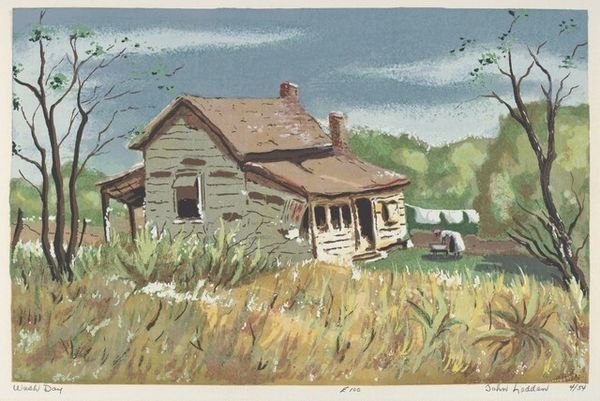
drawing, painting, watercolor
#
drawing
#
painting
#
landscape
#
watercolor
#
cityscape
#
modernism
#
watercolor
#
realism
Dimensions: sheet: 57.47 × 76.84 cm (22 5/8 × 30 1/4 in.)
Copyright: National Gallery of Art: CC0 1.0
Curator: Paul Baker Remmey created this watercolor painting entitled "Brooding House" in 1954. What are your initial thoughts on this particular cityscape? Editor: Somber. It's the heavy shadows and the contrast with the almost pastel-like quality of the house itself that really strikes me. There is a distinct melancholy about this painting. Curator: Indeed. Remmey uses washes of watercolor to define the architectural structure of this residence, but the play of light and shadow certainly creates an interesting juxtaposition. Note, for example, the flat planes of color versus the soft graded tones. Editor: Absolutely. I immediately consider the socio-economic context of the mid-1950s. Were these types of residences—stately but showing signs of age and neglect—becoming obsolete during suburban development? Is it an intentional nod to fading grandeur, considering social change, class disparity, the concept of ‘American Dream,’ perhaps? Curator: The geometric composition here is quite arresting. The way Remmey's rendering adheres to strict lines is interrupted only by the organic elements in the foreground, creating an interplay between rigidity and natural form. See how the hard lines soften the edges of reality. Editor: Which could mirror the human experience, of course, particularly post-war America. What price does the pursuit of clean-cut, post-war prosperity have on the people who exist in the space that painting occupies? I'm fascinated by those stark contrasts as much as Remmey seems to be. Curator: Remmey seems preoccupied with both light and its absence here; you might suggest the painting teases us with what it keeps hidden. The shadowed windows and entryway only allow small areas of bright yellow, but not illumination. The very mood of this painting does, however, encourage us to reflect more on it. Editor: And, to reflect on ourselves as participants within such structures and systems. Thank you, Paul Remmey, for stirring thoughts around these spaces that seem so present still today. Curator: I concur; contemplating the semiotic power of form and composition provides fertile ground to further study not only this painter, but painting from that particular historical era, generally.
Comments
No comments
Be the first to comment and join the conversation on the ultimate creative platform.
